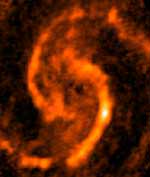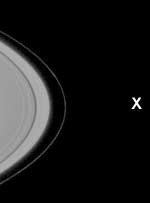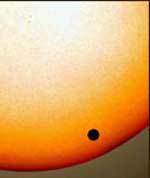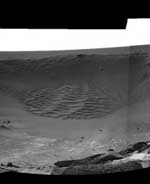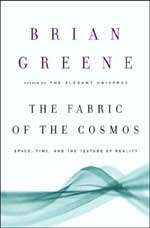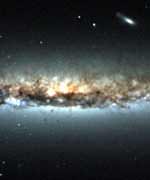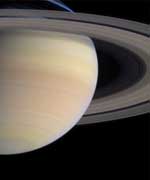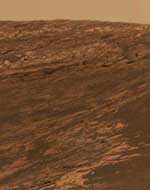
Image credit: NASA/JPL
The Opportunity rover continues to cruise around the rocky rim of Endurance Crater, which is about stadium-sized in diameter. The false color image (banner) was taken by the navigation camera on May 21, 2004. This crater excavated by the impact of a tiny asteroid or a piece of a comet is about 130 meters (430 feet) wide and, from the highest point on the rim, more than 20 meters (66 feet) deep, 10 times as deep as Eagle.
An exposure of outcrop in a cliff high on the inner wall across from the rover’s current position reveals a stack of layers 5 to 10 meters (16 to 33 feet) tall. Other exposures around the inner slope of the crater may be more accessible than the cliff, and chunks from the same layers may have been thrown out onto surrounding ground by the crater-forming impact.
Team members are analyzing images like these in detail while searching for the safest route to enter and exit the steep crater. In addition to slope, good entry and exit paths are sought where stable rock predominates over loose sand which may cause slippage or loss of wheel traction. The best current candidate is a portion of Endurance called Karatepe.
In the Mars simulation environment on Earth, called the JPL sandbox or ‘Mars Yard’, mobility experts, scientists and engineers are testing the rover’s slip limits at a twenty-five degree tilt.
Inside Endurance Crater are multiple layers of exposed rocks that might provide information about a much longer period of environmental history. From the viewpoints around the rim, Opportunity’s miniature thermal emission spectrometer is returning data for mapping the mineral composition of the rocks exposed in the crater’s interior.
At Eagle Crater, an outcrop of bedrock only about the height of a street curb yielded evidence that the site was once covered by a body of salty water deep enough to splash in. “That was the last dying gasp of a body of water,” principal investigator Steve Squyres said. “The question that has intrigued us since we left Eagle Crater is what preceded that. Was there a deep body of water for a long time? Was there a shallow, short-lived playa? We don’t know.”
Although the stack of rock layers at Endurance is more than 10 times thicker than the bedrock exposure at Eagle Crater, it is still only a small fraction of the 200-meter-thick (650-foot-thick) stack seen from orbit at some other locations in Mars’ Meridian Planum region.
A close-up look at the Endurance Crater rocks could help with interpreting the other exposures seen from orbit. “It’s possible that the whole stack was deposited in water — some particles washed in by flowing water and others chemically precipitated out of the water,” said Dr. Phil Christensen of Arizona State University, Tempe, lead scientist for the rover’s spectrometer. “An alternative is that wind blew sand in.”
Brian Cooper, leader of JPL’s squad of rover drivers for Spirit and Opportunity, said the initial view of the crater doesn’t settle accessibility questions yet. “The slope right in front of us averages 18 to 20 degrees. Getting into the crater is no problem, but we have a lot more work to do to assess whether we could get back out. That depends on soil properties and slippage, as well as slope.” The planned circuit around the rim will also require careful navigation. “If you don’t go close enough to the lip, you can’t look in, but if you go too far, you could fall in,” he said. “We’re going to have a very interesting few weeks.”
When the rover tried to exit its much smaller (20 meter diameter) Eagle Crater–the mission’s initial landing site–the exit slope proved steep enough to lose wheel traction until a backup plan to maneuver through loose sand friction with six-wheel contacts.
When NASA sent astronauts to the lunar surface more than 30 years ago, it was decided not to allow them to enter craters as fresh and steep as Endurance, but Opportunity may be able to do what no human has done before on another planet.
Original Source: Astrobiology Magazine

